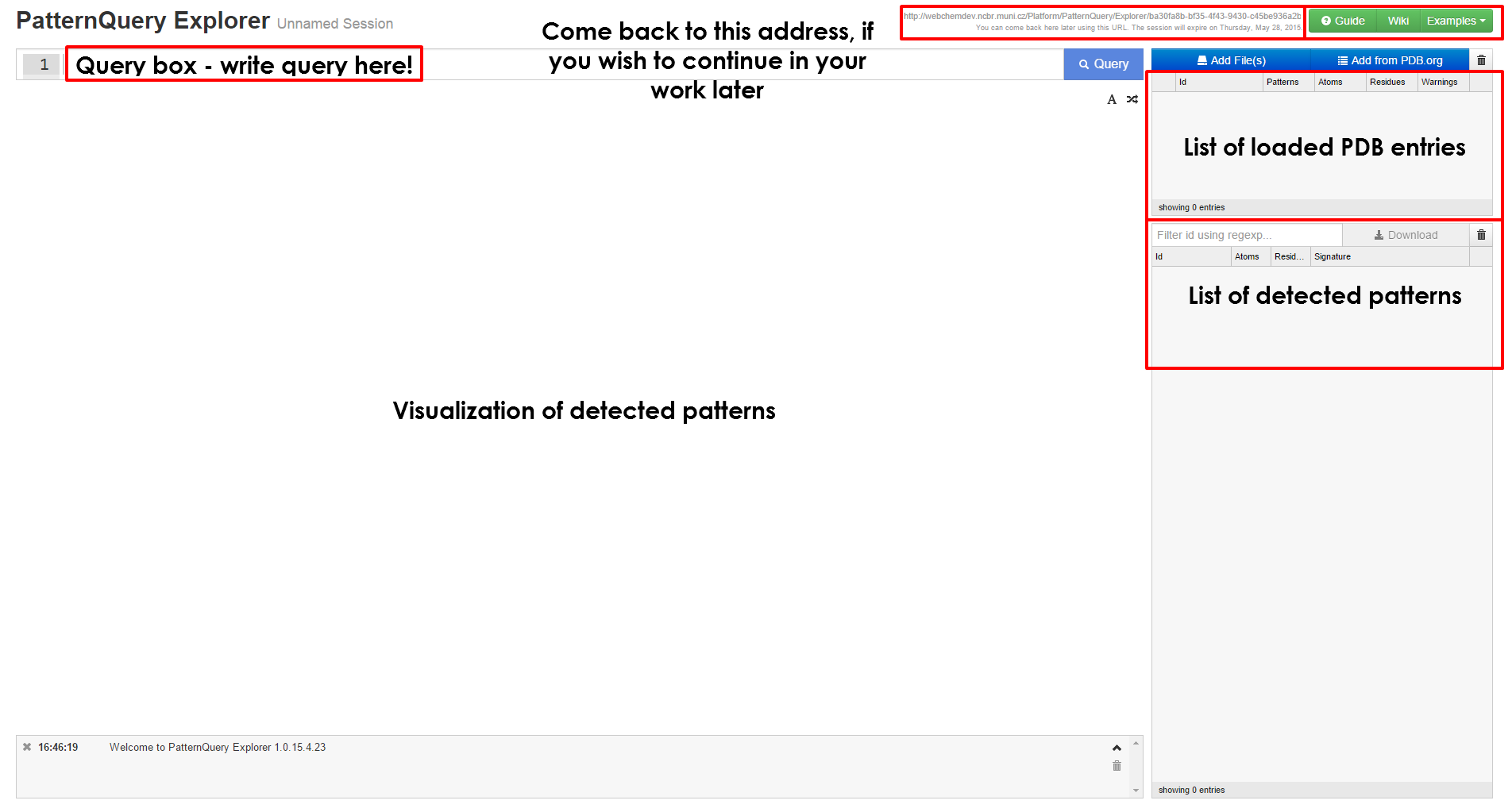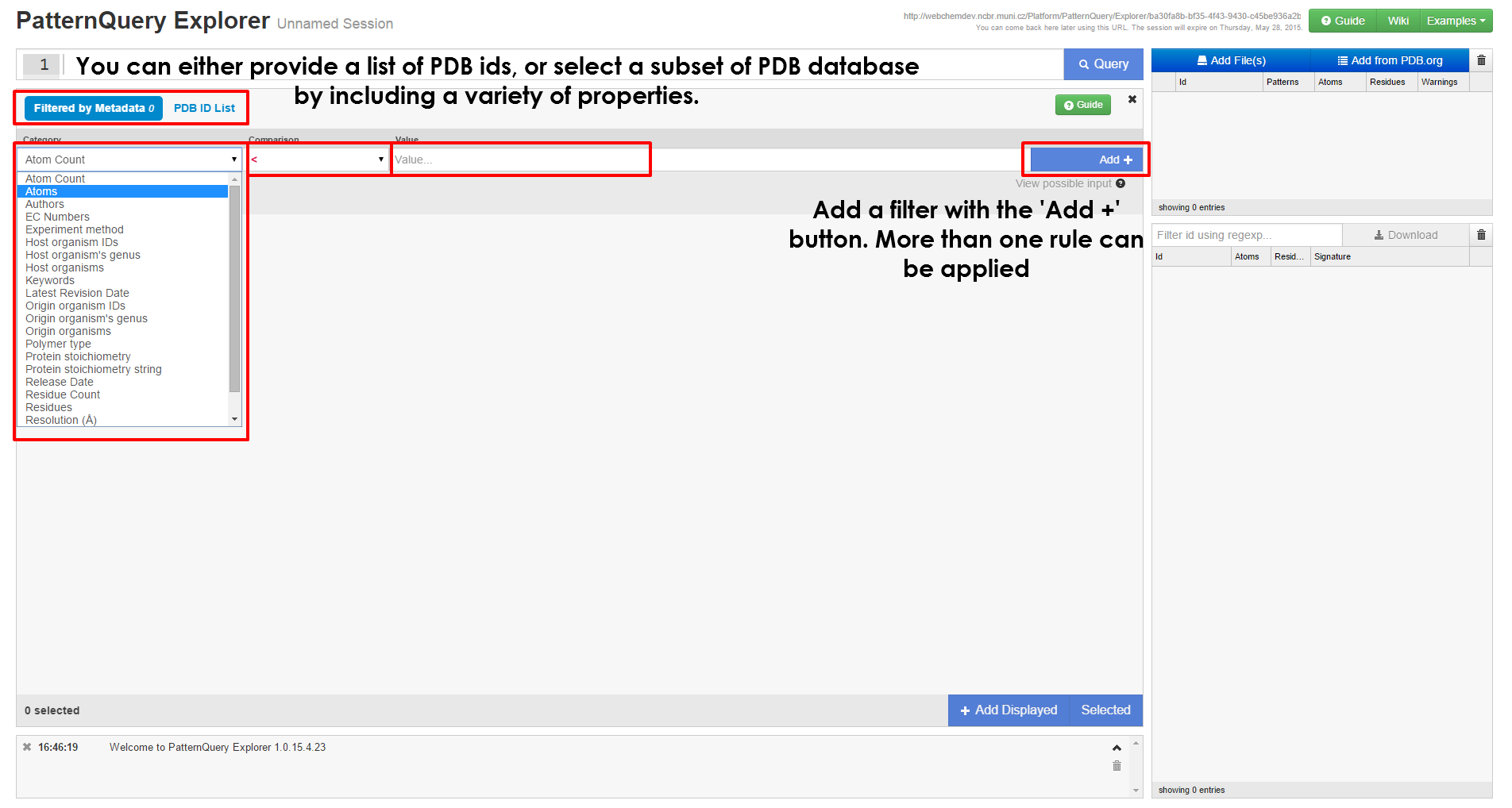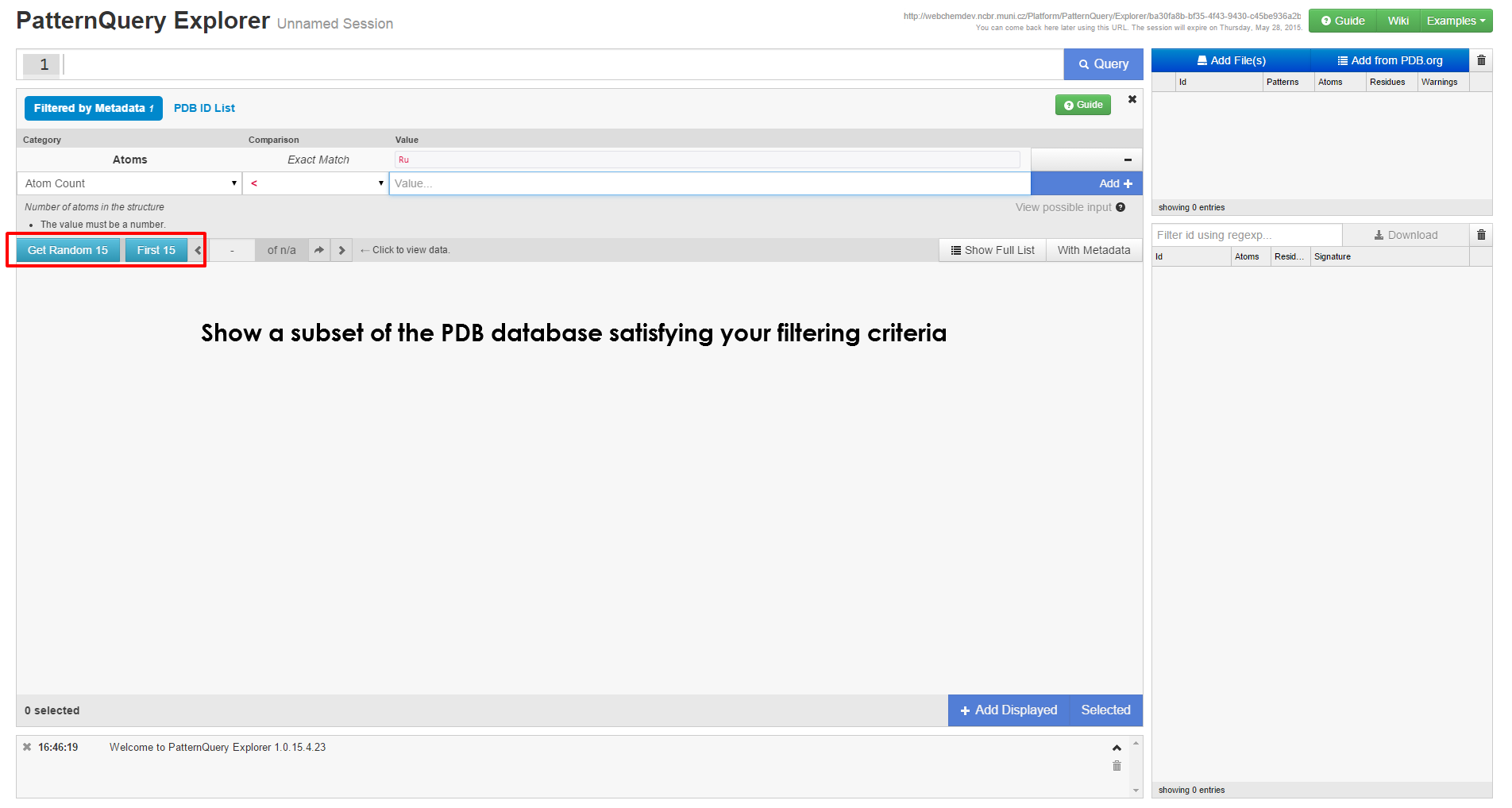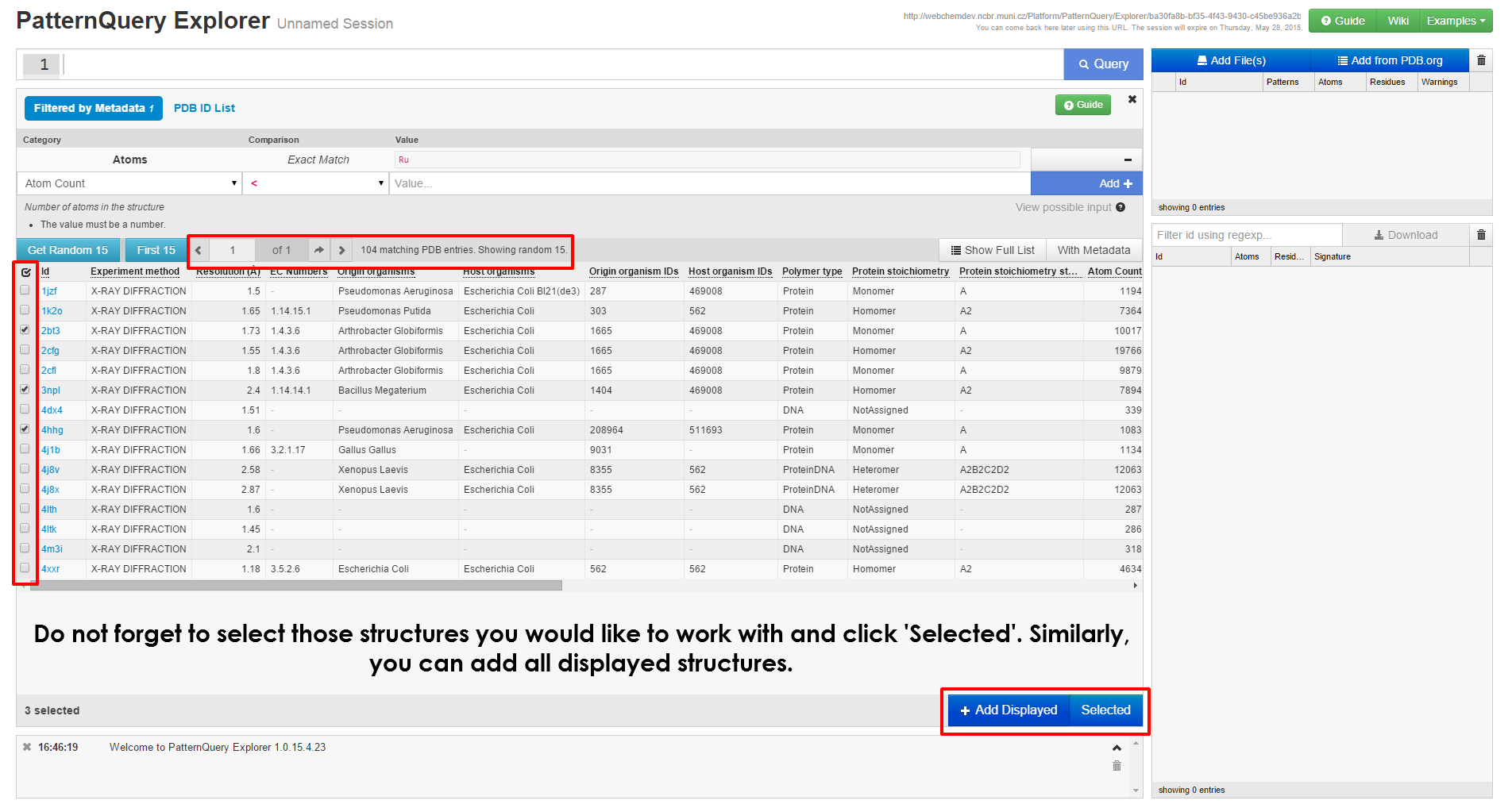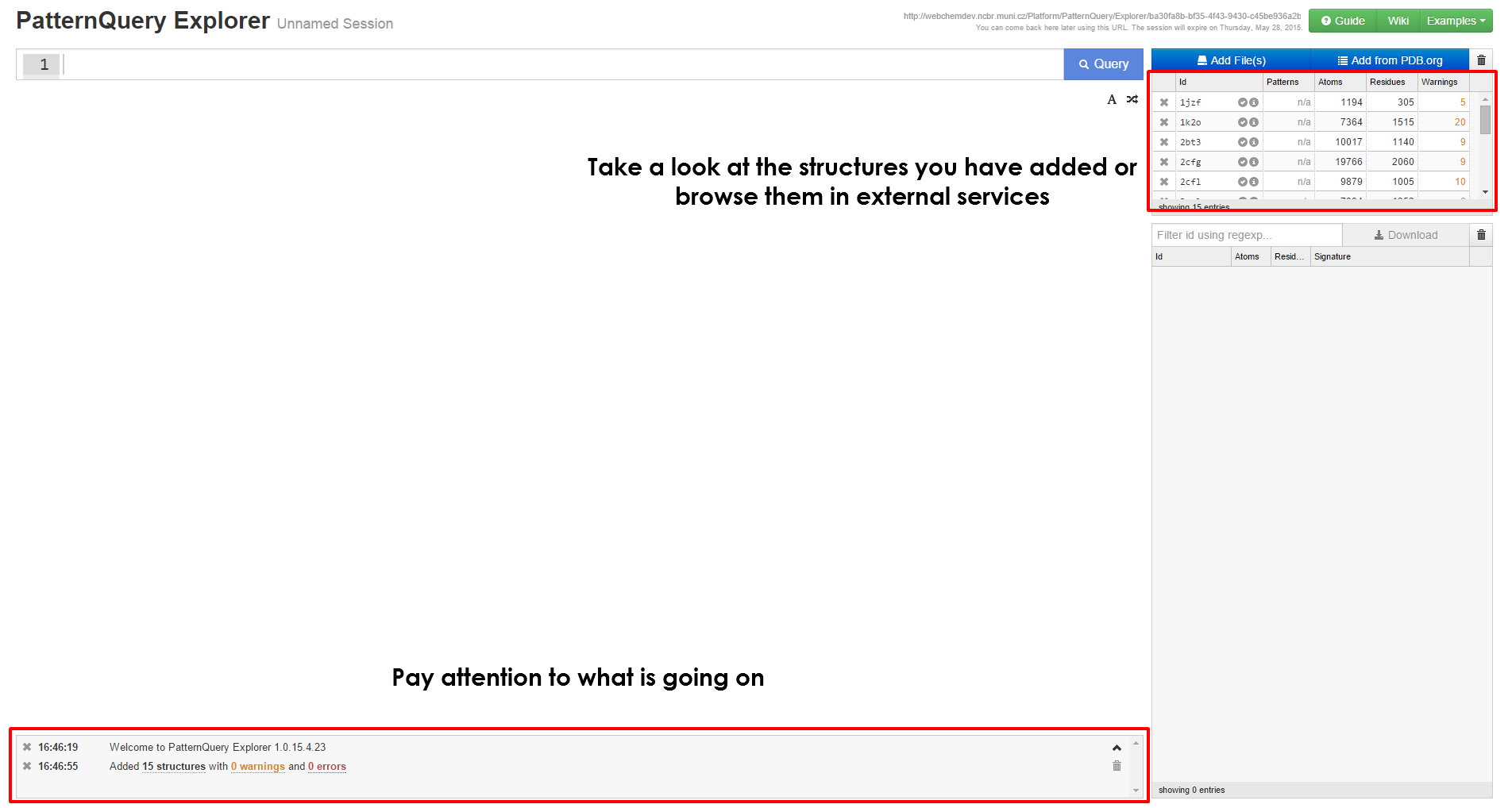PatternQuery:Explorer: Difference between revisions
Appearance
Initial commit |
|||
| Line 33: | Line 33: | ||
| [[File:MotiveQuery-Explorer5.png| 650px]] | | [[File:MotiveQuery-Explorer5.png| 650px]] | ||
|- | |- | ||
| You can to query a subset of Protein Data Bank based on numerous metadata. At first select a property you would like to filter by, then select a comparison method and finally fill in the demanded value. Please read carefully hints and examples below each selected property. Different properties can have different means of providing input values. Note that you can also include a logical expressions. For example: '''S & !N''' in ''Atom'' property means that just structures containing | | You can to query a subset of Protein Data Bank based on numerous metadata. At first select a property you would like to filter by, then select a comparison method and finally fill in the demanded value. Please read carefully hints and examples below each selected property. Different properties can have different means of providing input values. Note that you can also include a logical expressions. For example: '''S & !N''' in ''Atom'' property means that just structures containing a sulfur atom and none nitrogen will be considered. Multiple filters can be applied at the same time. | ||
| Once you are happy with the specified filters, you can view a subset of the PDB. Either the '''First 15 entries''' based on their id or '''Random 15 entries'''. | | Once you are happy with the specified filters, you can view a subset of the PDB. Either the '''First 15 entries''' based on their id or '''Random 15 entries'''. | ||
|- | |- | ||
Revision as of 16:33, 27 December 2014
When mining the whole Protein Data Bank for structural fragments it is always better to look before you leap. This is one of the purposes of the MotiveQuery Explorer application. This JavaScript/HTML is tailored for:
- Querying user submitted data (up to 100 structures).
- Query smaller subsets of the Protein Data Bank
- Perfecting queries before mining the PDB database.
The last point would be probably of the most interest for the wide-range of users. In the following visual you will learn how to work with MotiveQuery Explorer.
If the service is not working the way it should, please check your browser compliances in the technical details section.
Launch MotiveQuery Explorer app
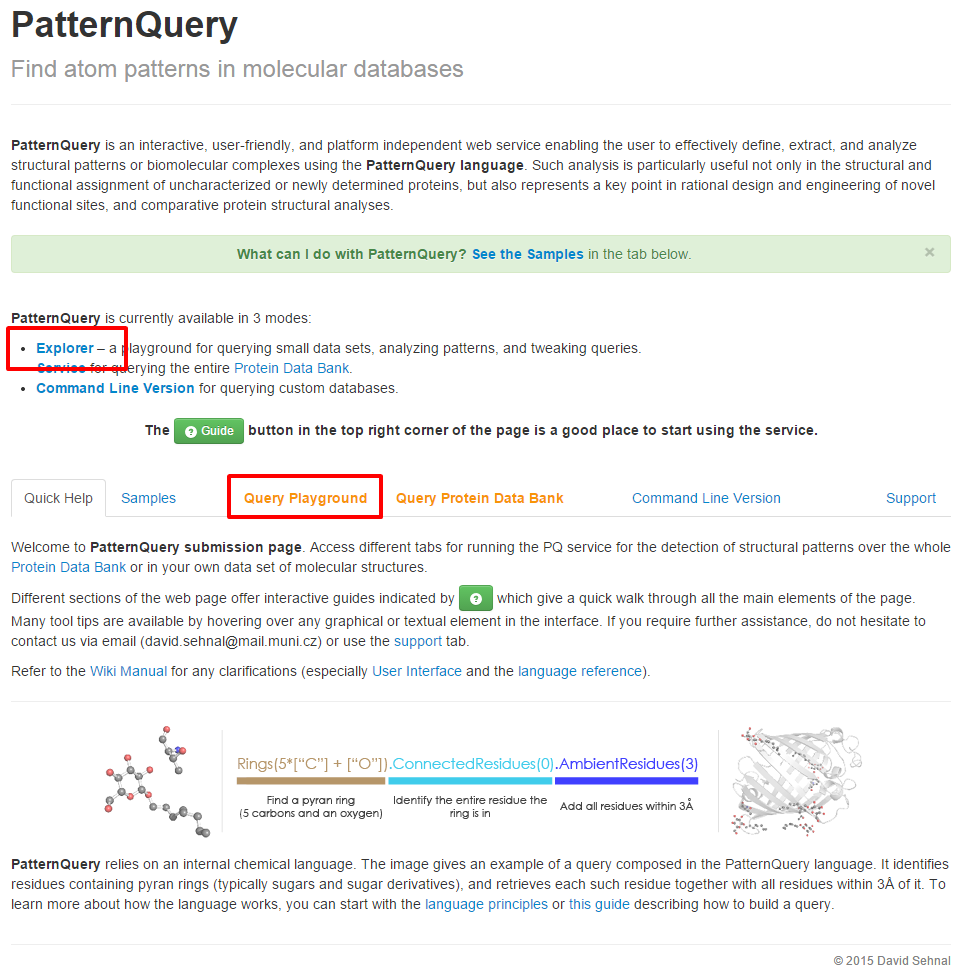
|
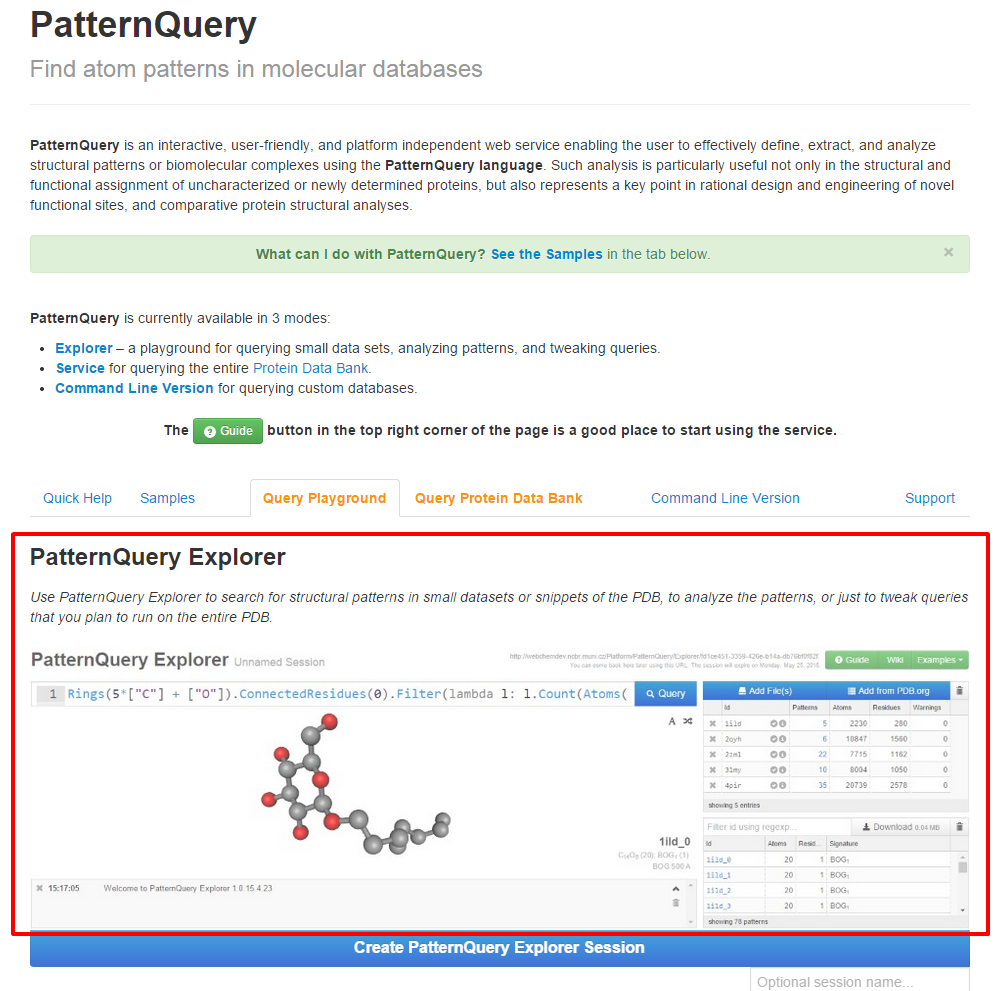
|
| Follow either Explorer link or Query Playground tab at the Synopsis page, in order to launch the application. | Create a new session or load the previous one. |
Get started with MotiveQuery Explorer
Executing Query & interpreting results
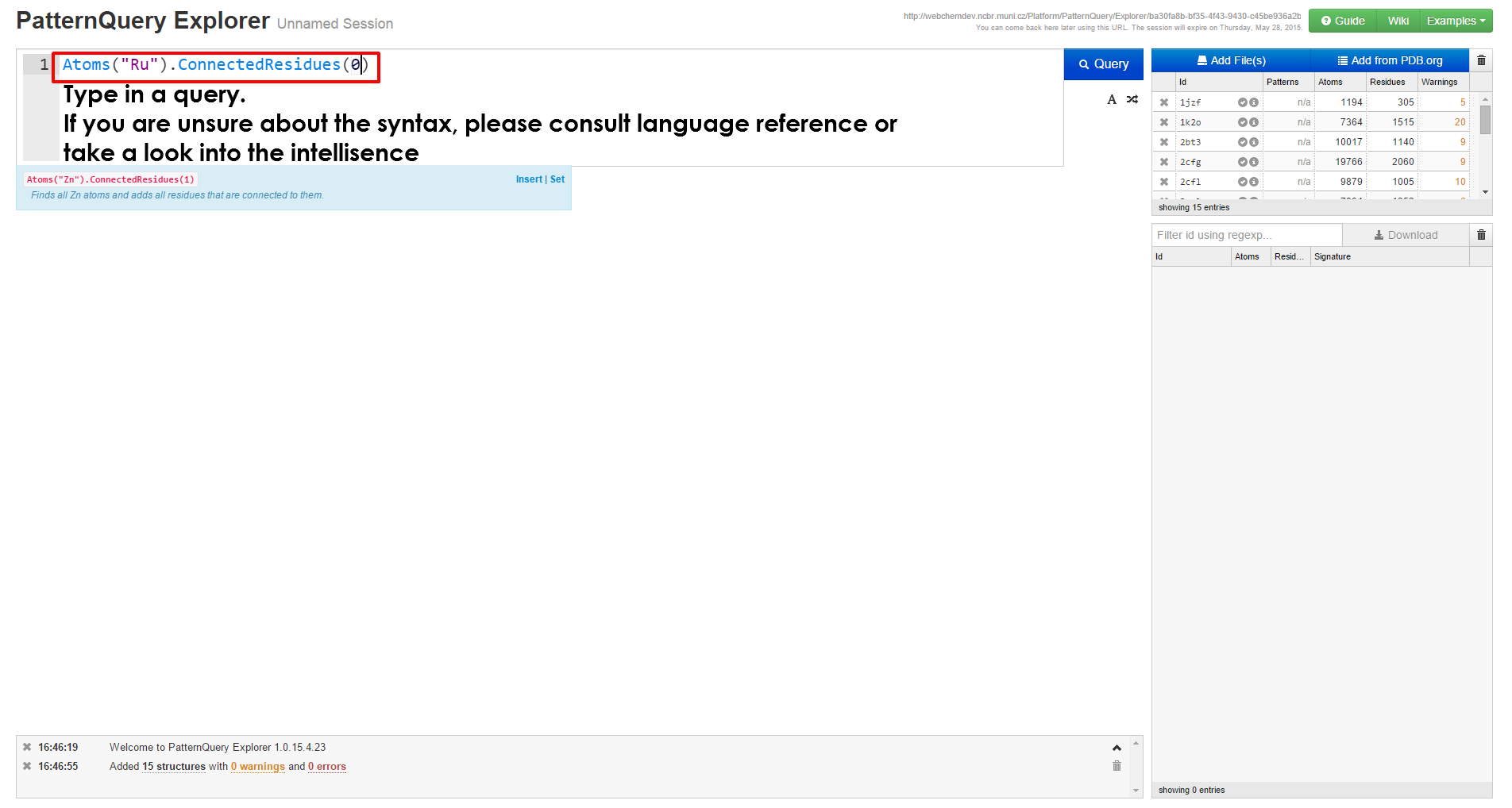
|

|
| When you have loaded at least a single structure, you can immediately start typing queries in the query box at the top of the page. If you are unsure on how to create query, first browse the principles behind the MotiveQuery language and learn how to build a query. Case studies and language reference might come handy as well. | After the query is executed, the results are visualized in no time, you can inspect them in the browser or download them for further processing. You are free to come back to this web address later, the results are kept for at least a month. |
